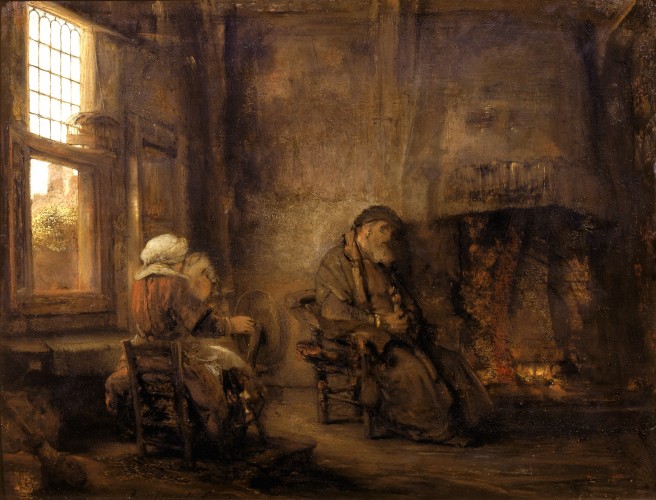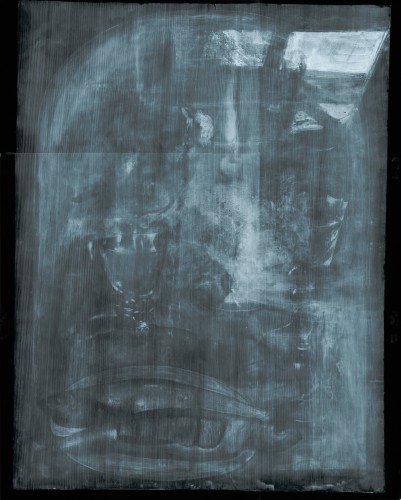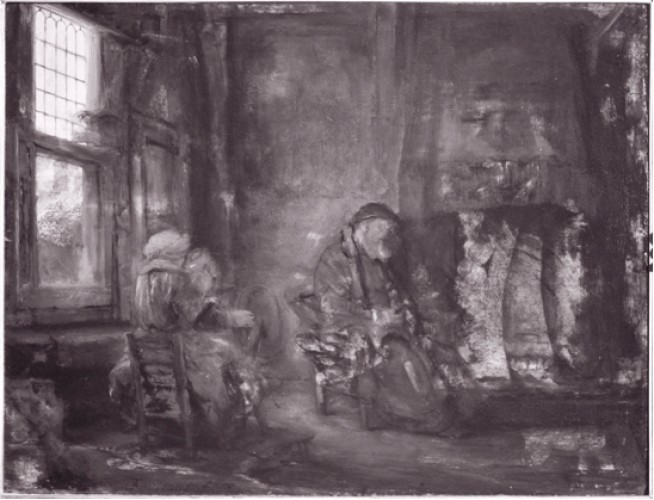In 2010, Museum Boijmans van Beuningen discovered that it had yet another Rembrandt in the collection: namely Tobit and Anna. This was the conclusion of Ernst van de Wetering of the Rembrandt Research Project after a thorough study of the work. At the time, Jeroen Giltaij, curator of the museum, expressed doubts about this new attribution in the Dutch television programme ‘De Wereld Draait Door’ (see below). From 24 March, the museum will be giving insight into the discussion about who actually wielded the brush in a small presentation.
Prof. Dr. Ernst van de Wetering (1938) presented his findings about the painting in October 2010 in the fifth part of Corpus of Rembrandt paintings. He believes that the painting Tobit and Anna, contrary to what was thought previously, was made by the master himself. Dr. Jeroen Giltaij (1947) had already decided in 1994 that for all sorts of reasons the work could at most be attributed to one of the pupils in Rembrandt’s studio. Museum Boijmans van Beuningen is now showing two videos in which both experts present their arguments. The presentation shows detail shots of the signature on the painting and also includes an x-ray photograph and an infra-red reflectogram.
It is really a Rembrandt!
Ernst van de Wetering has found a number of clear indications in the painting Tobit and Anna. He attributes much of his argument to the use of light in the painting. He claims that Rembrandt often messed around with the effects of light in the painting. The x-ray photograph shows that the painter initially had other ideas about the light. Scientific research, in which the signature on the painting was microscopically and chemically studied, suggests that the painter added his signature at the same time as the paint of the painting itself. In addition, Ernst van de Wetering argues that the style, ambiance and certain elements are very similar to those on proven paintings by Rembrandt. He also refers to the etching Peter and John at the Temple gates (1659) from the museum collection. In this etching, the beggar has the same composition as Anna, the wife of Tobit, in the painting.
It is not a Rembrandt!
The most important argument that Jeroen Giltaij has against the attribution of the painting Tobit and Anna to Rembrandt’s oeuvre is that Rembrandt would never paint over a panel that had been used before. In addition, the window is open yet the fire is burning; this is an inaccuracy that Rembrandt would never have made, argues Jeroen Giltaij. The curator also criticises the coarseness with which the hands of Anna is painted, for: "Rembrandt normally painted hands you would want to shake yourself". Giltaij also considers other parts of the painting, in addition to the hands, too coarsely painted to be a Rembrandt. Giltaij says he understands the arguments of Van de Wetering, but cannot recognise his substantiation in the painting.
The painting Tobit and Anna is originally from the collection of the Rotterdam collector Willem van der Vorm. The museum has had ninety-three paintings on perpetual loan from the Willem van der Vorm Foundation since 1972. Museum Boijmans van Beuningen has three proven paintings and 36 drawings by Rembrandt in the collection.

Photo signature Tobit and Anna.
Archive Museum Boijmans Van Beuningen Rotterdam




